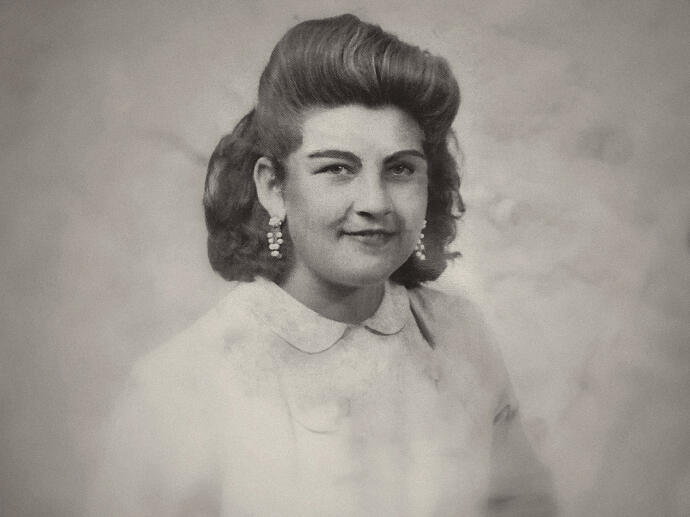Ginette Kolinka (born February 4, 1925)
Survivor and witness of Auschwitz and Theresienstadt
1/n
Ginette Kolinka was born on February 4, 1925 in Paris into a non-practicing family of Jewish origin. She lived her early childhood in the 4th arrondissement then in Aubervilliers.
Survivor and witness of Auschwitz and Theresienstadt
1/n
Ginette Kolinka was born on February 4, 1925 in Paris into a non-practicing family of Jewish origin. She lived her early childhood in the 4th arrondissement then in Aubervilliers.

2/n She was the sixth in a family of seven children and had a very sheltered childhood. Her father, Léon, had a clothing workshop. In 1942 the whole family moved to Avignon. They all work in the markets. 

3/n On March 13, 1944, the Gestapo and the Militia came to arrest the men of the family, her father, her 12-year-old brother and her 14-year-old nephew on denunciation. Faced with Ginette's remarks, they took her on board too.
1945, Ginette with her scarf: “I have shaved hair”
1945, Ginette with her scarf: “I have shaved hair”

4/n They were interned in the Drancy camp. On April 13, 1944, they were deported by convoy 71 in cattle cars from Bobigny station to Auschwitz II-Birkenau.
Her father and brother joined the trucks and were gassed on arrival.
Her father and brother joined the trucks and were gassed on arrival.

5/n Ginette entered the women's camp, was tattooed with registration number 78 599. In April 1945, faced with the approach of the Allied armies, she was transferred for 8 days, by a death train to the Theresienstadt camp. Ginette had typhus.
6/n On her return in June 1945, she found her mother and 4 sisters. Ginette tried to reume her life for two years and did not tell anyone about her deportation. Ginette married in 1951, has a son, Richard Kolinka, who became the drummer of the musical band Telephone. 

7/7 She resumed her work in the markets. Today, she frequently testifies to young people.
She accompanied many trips to Auschwitz and published 'Return to Birkenau' in 2019.


She accompanied many trips to Auschwitz and published 'Return to Birkenau' in 2019.


• • •
Missing some Tweet in this thread? You can try to
force a refresh




















